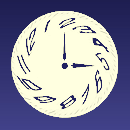

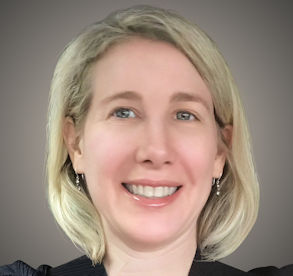 Dec 2022
Dec 2022
On December 1, 2022, CSD-N board member Alexandra Wharton virtually attended the NIH (U.S. National Institutes of Health) Sleep Disorders Research Advisory Board (SDRAB) meeting. This is the second consecutive term that a CSD-N board member is representing the CRD patient community on SDRAB.
Circadian rhythms regulate essential functions such as hormone release, body temperature, sleep, metabolism and digestion. Several of the meeting's presentations discussed how circadian dysregulation can cause various health ailments including poor immune response, sleep deficiency, diabetes and obesity.
In mammals, circadian biology is partially governed by the brain's suprachiasmatic nucleus (SCN) or central clock. Individual organs and cells also contain their own circadian clocks, called peripheral clocks, that operate on 24-hour schedules. The clocks are driven by a self-governed transcription-translation feedback loop that involves the core clock-controlling genes BMAL, CLOCK, CRY and PER.
Dr. Frank A.J. L. Scheer, director of the Medical Chronobiology Program at Brigham and Women's Hospital, elucidated that the SCN / central clock is most sensitive to retinal light information whereas peripheral clocks have to balance whether they listen to signals derived from the SCN (through the regulation of core body temperature and hormones) or to inputs from environmental behaviors such as feeding times and exercise. This multi-oscillation system means that different clocks are sensitive to different zeitgebers (time cues).
An eating schedule that is misaligned with a person's circadian rhythms can increase their risk of becoming obese or developing type 2 diabetes. Dr. TusaRebecca Pannucci, branch chief of Nutrition and Economic Analysis at USDA, explained that time-restricted eating (TRE) could be an effective dietary strategy for combatting digestive and metabolic problems. TRE is a dietary pattern that optimizes daily rhythms for insulin peaks and glucose tolerance by consuming food within a shortened window of time during the day.
Dr. Marishka Brown, director of the NIH National Center on Sleep Disorder Research, asked about innovative ways to increase awareness of sleep health and disorders. Alexandra shared that CSD-N recently presented about CRDs to a Micron Technology's Employee Resource Group (ERG), which focuses on creating a culture of inclusion and acceptance for people with invisible conditions and unseen disabilities.
The next meeting, on April 7, 2023, will be the first since the pandemic that members will be attending in person.
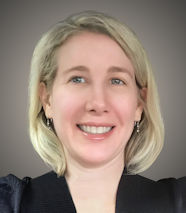 Alexandra Wharton |
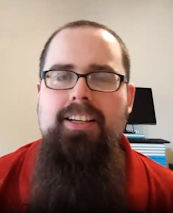 Andrew Cowen |
Nov 2022
In October Micron Technology invited CSD-N to speak about DSWPD and Non-24 to an Employee Resource Group named Capable. Micron Technology is headquartered in Boise, Idaho, and is the largest chip producer in the United States with about 48,000 employees in 17 countries.
 Employee Resource Groups (ERG) are employee-led communities that are built around shared interests, experiences and needs. They are a part of Micron's diversity, equity and inclusion (DEI) initiatives.
Employee Resource Groups (ERG) are employee-led communities that are built around shared interests, experiences and needs. They are a part of Micron's diversity, equity and inclusion (DEI) initiatives.
Micron's Capable ERG focuses on creating a culture of inclusion and acceptance for seen and unseen disabilities - allowing employees to thrive in a climate of acceptance and equality.
Board members Alexandra Wharton and Andrew Cowen spoke on November 17 on behalf of CSD-N. Alexandra spoke about DSWPD, and Andrew spoike about Non-24. They explained that circadian rhythm sleep disorders are unseen disabilities or invisible conditions. They are not outwardly visible to others - even healthcare professionals. People with an unseen disability often look healthy so it can be difficult for others to grasp the daily challenges they go through.
Unseen disabilities don't get a lot of empathy but the hardship is real. Educations, careers, ambitions and social and family life suffer. When left unaddressed, they can be detrimental to one's health.
Nov 2022
It's time to elect directors to the CSD-N Board of Directors. Two new applicants, Leslie Head and Naomi Mittet, have been nominated by the board. Four current board members are also running for re-election: Andrew Cowen, James Fadden, Lynn McGovern, and Alexandra Wharton. Four other directors have terms which don't expire until next year.
Candidate statements appear in the current newsletter.
The board has also voted to expand to 10 directors, so there are 6 candidates for 6 open slots. Since they will all be elected the board has chosen to dispense with formal balloting by the membership.
Per the Bylaws, the new directors take office Jan 15.
Sept. 2022
Circadian Sleep Disorders Network will be holding elections for its Board of Directors. Requirements are described in www.circadiansleepdisorders.org/docs/ReqDir.php. Meetings are held by online forum, so you can log in at any time of day to read what's been posted and post your replies. Meetings do continue for two months or more, though often not very actively.
If you're interested, please let us know soon (latest Nov 10), following the instructions at the end of the above document. Directors start serving January 15, 2023. Terms generally run for two years.
We are also sometimes looking for other volunteers willing to help. These are often board members but do not have to be. If you're interested in volunteering, please let us know.
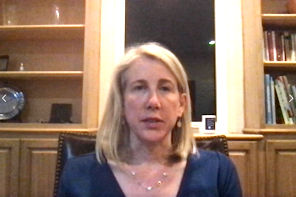
June 2022
The 36th annual conference of SLEEP - the world's largest sleep meeting - was held in Charlotte from June 4th to the 8th, 2022. It featured 100 lectures and presentations about the future of sleep medicine and circadian research, sleep health disparities, sleep and cannabis, school start times and daylight saving time.
Representatives from several patient advocacy groups including Circadian Sleep Disorders Network (CSD-N), Restless Leg Syndrome Foundation, American Sleep Apnea Association, Wake Up Narcolepsy, and Hypersomnia Foundation were invited to speak on the panel, Rise of the Patient Voice in Sleep Medicine: The Role of the Patient Advocacy Groups.
Via a video presentation, CSD-N Board Member Alexandra Wharton explained CSD-N's mission to raise awareness of circadian rhythm sleep disorders (CRDs) and to improve the lives of people CRDs.
She also highlighted CSD-N's patient-powered registry and survey, which collected information from a large number of people who suffer from CRDs. We expect to publish some results from the survey shortly. We hope it stimulates additional research into the causes, treatments, and the effects of circadian rhythms.
Elevating patient voices will enhance care and improve the lives of the 40 to 60 million Americans who face sleep disorders. We are honored to be part of the momentum toward greater patient inclusion in the sleep field.
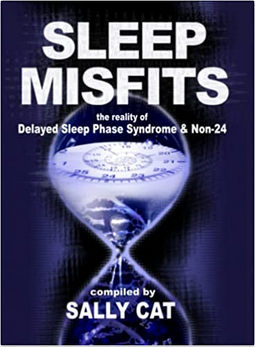
May, 2022
Sleep Misfits: the reality of Delayed Sleep Phase Syndrome & Non-24, compiled by Sally Cat, has recently been published. It includes excerpts from the CSD-N website and other sources, as well as lots of quotes from people on the DSPS and Non-24 Facebook groups. It is available here on Amazon.
From the Foreword: "Sleep Misfits is the first book to extensively explore delayed sleep phase syndrome (DSPS) and non-24-hour-sleep-wake disorder (Non-24) through the words of actual experients....There remains massive prejudice and discrimination against those of us whose body clocks prevent us from waking and sleeping at socially-approved hours. The main purpose of this book is to tackle these wide-scale negative assumptions by increasing empathy. Additionally, the book is intended to serve as a manual for people affected, including their families."
We are aware of one instance in the book in which we are misquoted. On pag 24 she says (de-emphasis added):
According to Rare Diseases Database, Non-24 "occurs in 55-70% of completely blind people, but also occurs in an unknown number of sighted people."6 Circadian Sleep Disorders Network suggest the percentage of sighted Non-24ers may be 0.03% (three people in every thousand).7We actually suggest (in the footnoted reference) that
Non-24 is quite rare. An incidence of 0.03% has been quoted. Non-24 occurs primarily among blind individuals, though some sighted persons have the disorder also.So the 0.03% in our document refers to all Non-24, not just sighted Non-24. (And, by the way, 0.03% is three in ten thousand, not three in one thousand.)

Apr 7, 2022
CSD-N Board Member Alexandra Wharton was officially welcomed to the NIH (U.S. National Institutes of Health) Sleep Disorders Research Advisory Board (SDRAB). She represents the circadian sleep disorders patient community. Alex is the social media liaison for CSD-N, and is also a chapter leader for Start School Later.
The SDRAB receives updates on the progress of sleep and circadian research activities across NIH, and the activities of Federal stakeholders and professional societies. The board is responsible for periodic updates to the NIH Sleep Disorders Research Plan, and advises the NIH on next steps.
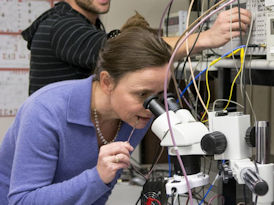
March 25, 2022
LumenAstra and the Microwave Lab at the University of Colorado Boulder (Prof. Zoya Popovic, right) are developing a small, wearable sensor for measuring internal body temperature. They recognize the need for easier continuous non-invasive core body temperature monitoring.
The team contacted CSD-N President Peter Mansbach to learn more about diagnosing circadian rhythm sleep disorders. This sensor could in principle provide a simpler way of definitively diagnosing DSPD and especially Non-24, using a procedure both less invasive and less demanding than measuring DLMO (Dim Light Melatonin Onset) under "constant routine" conditions (dim light, no exercise, etc).

March 13, 2022
The old Indian said, "Only the government would believe you could cut a foot off the top of a blanket, sew it to the bottom, and have a longer blanket."
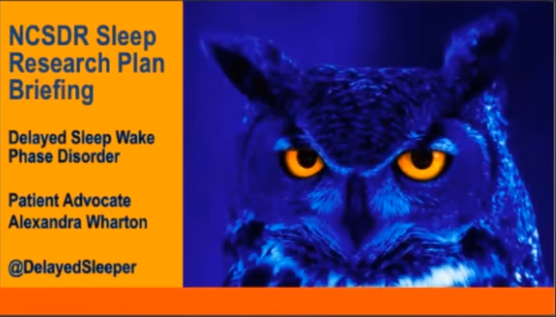
 Jan 25, 2022
Jan 25, 2022
CSD-N board member Alexandra Wharton was invited to speak at the Congressional briefing on Jan 25 for the (U.S.) NIH Sleep Disorders Research Plan. She gave a wonderful introduction to DSPD for the attendees. The briefing was carried live on Zoom, and was open to the public. You can view her seven minute presentation here. The entire hour-long briefing is available here.
The Sleep Disorders Research Plan was developed by the National Center for Sleep Disorders Research (NCSDR), a center within the U.S. National Institues of Health. The Plan was developed with the help of the Sleep Disorders Research Advisory Board. Thanks to Susan Plawsky, who represented the circadian sleep disorders patient community on that board during the Plan's development.
Archived News 2021
Archived News 2020
Archived News 2019
Archived News 2018
Archived News 2017
Archived News 2016
Archived News 2015
Archived News 2014
Archived News 2013
Archived News 2011 - 2012 (incomplete)